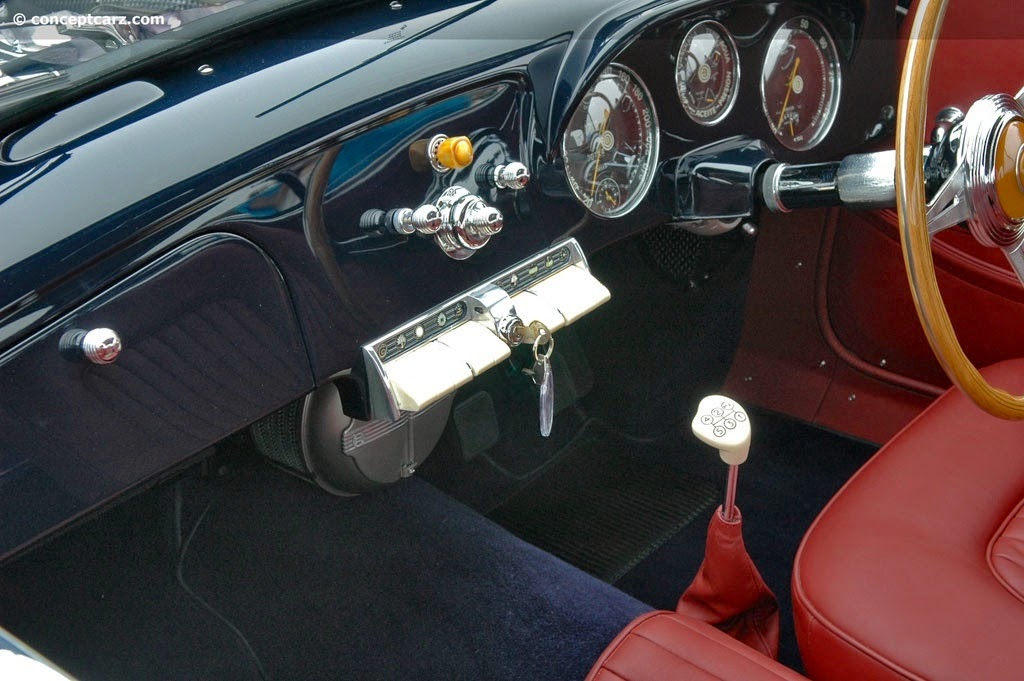Pegaso was the only Spanish car to receive international supercar status in the fifties. At the time, the company was government-backed and had experience building large 9 litre coaches. The Z102 made its first appearance at the 1951 Paris Auto Show.
It was the brainchild of former Alfa Romeo designer Wilfredo Ricart and built by the government backed ENASA, short for Empresa Nacional de Autocamiones SA, in the remnants of the Hispano Suiza factory. The name Pegaso was derived from the Greek mythical creature Pegasus; a flying horse. Ricart penned a V8 equipped with two camshafts for each bank of cylinders. 5-speed manual. Initial displacement was a modest 2.5 litre but Ricart left enough room to increase the swept volume to 2.8 and even 3.2 litre, with supercharging available. The smallest of the engine variants was good for an impressive 165 bhp while a whopping 360 bhp was claimed for the blown 3.2.
Additionally specialist coach builders Touring of Milan and Saoutchik of Paris were commissioned to work their 'magic' on the Z102 chassis. The latter penned strangely attractively baroque coupe and cabriolet bodies. Pegaso did claim a spot in the history books; in September of 1953 a supercharged roadster was timed at 152 mph, a road car record. It is believed only 87 Z102s were built, and that a total of 18 were built by Saoutchik; of these, A total of 8 would be Series II with their much more sedated lines and revised nose, 7 were Berlinettas (coupes), each one being slightly different, and just one would be a cabriolet. (wikipedia & ultimatecarpage.com)
(Photos from rmauctions.com, supercars.net, ultimatecarpage.com & autowp.ru)

































































































.jpg)











.jpg)
.jpg)
.jpg)
.jpg)
.jpg)






.jpg)




.jpg)

